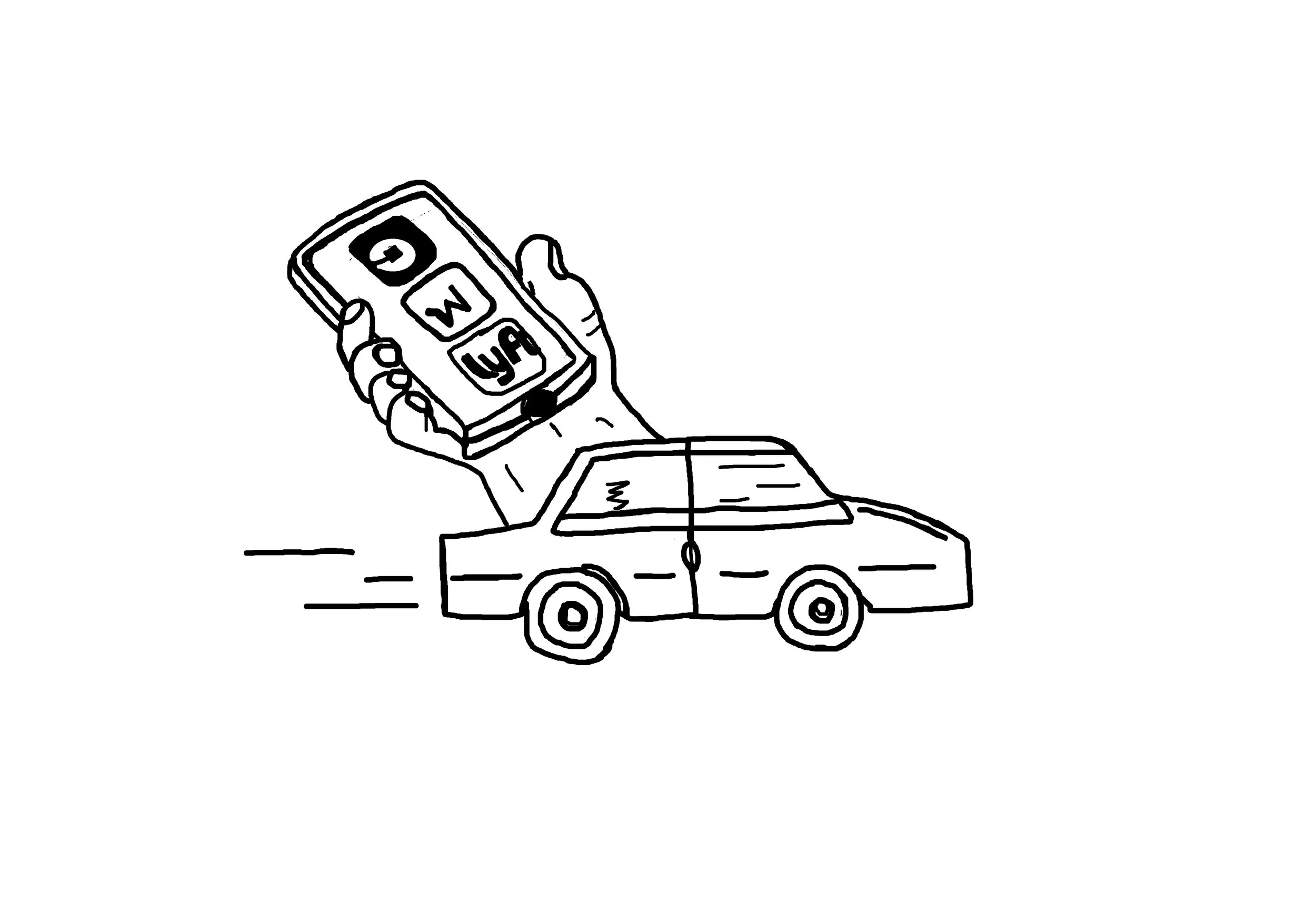Clearing the Roads: Carsharing in the modern age
By Bryce Dzialo
March 2, 2017
A sharp zap of static over the Greyhound bus speaker woke me at 4 AM. “Welcome to Burlington International Airport.” This was my stop, and after the six hour ride from Boston to Burlington the last thing I wanted to do was to wait two more hours for the county buses to start their routes. I try to reduce my carbon footprint when I can by taking the bus, but, in all honesty, that night I wished I had driven my car.
Then I remembered: Uber. I had not used the app before and had heard the first ride was free. Why not? One less car on the road, right?
Immensely convenient and loosely regulated, Uber, Lyft, and their competitors blur the line between carpooling and taxiing. Mobile ride sharing apps offer consumers instant access to a fleet of drivers to take them throughout their local areas. The drivers are encouraged to use their own cars, and can use the service as a full time job or supplementary employment. These drivers are available nearly every hour of every day and are curated by the riders themselves through in-app rating systems. These characteristics may bring to mind a modern and sophisticated sharing society, but in fact, the “ride sharing” business model has been around for much longer than those of us using smartphone apps may know.
A car service method known as “jitney cabs” popped up around Los Angeles in 1914, and experienced a nationwide boom in large cities across the country following the beginning of World War I. Young, unemployed men took to the streets accepting fares and crawling under the skin of taxi drivers and their companies. Jitneys could steal fares from cabs, run efficient routes on the edge of legality, and carry more passengers than standard streetcars. Over time jitney cars took on a different identity with seeded racial connotations. In Chicago, the jitneys experienced a “perfect storm” of success on the city’s South Side as the primarily white cab drivers would not enter predominantly black neighborhoods, and taxi companies would not hire African-American drivers. Jitneys offered jobs to these men, and allowed them the freedom to operate along the neatly organized South Side streets like busses, able to offer rides to many customers each day. The battle of taxis and jitneys remained mostly political in nature and was fought predominantly with words and regulations set forward locally by municipal governments. Overtime, however, extensive regulation passed incrementally upon jitneys got the better of them and led to their demise.
After the disappearance of the jitney, ride sharing as a common practice went into hibernation. The idea of riding in someone else’s personal vehicle did not truly arise again until times of oil rationing, as well as when environmental concerns entered mainstream politics at the start of the modern environmental movement in the 1960’s and 70’s. The first of these oil-rationing periods came during World War II when the U.S. government teamed up with the oil industry to produce a pro-carpooling ad campaign which encouraged patriotic Americans to join “car clubs” in order to help the boys overseas. The campaign included the creation of posters and advertisements which exploited the feelings of patriotism, fear of the enemy, and guilty wastefulness. The war carpooling enthusiasm died down just as it did with the jitneys, only to be ramped up again when President Nixon signed the Emergency Highway Energy Conservation Act in 1973.
The act authorized the Secretary of Transportation to increase use of carpooling with approved demonstration projects in urban areas to “conserve fuel, decrease traffic congestion during rush hours, improve air quality, and enhance the use of existing highways and parking facilities.” Carpooling was just a daily routine for many Americans, and even though the support from the government was linked to the oil industry, the benefit to air quality and the awareness of the environmental movement created can certainly be called a win for modern environmentalism.
So, what exactly does this mean for the future of services like Uber and Lyft? Are they just modern jitneys with a predetermined fate to suffocate in government regulation, or are they a transportation movement of a new generation destined to be a part of a sharing economy that assists in cutting auto-pollution for a green future? If it is the latter, these services will need to expand their customer base by focusing on taking cars off the road, rather than only making each car a cab. If they do not begin to offer carpool-style services like recurring trips, advance scheduling, and a community focus, apps like Uber might suffer the same fate as jitneys and die by over-regulation. While these characteristics are something Uber and Lyft do not specialize in yet, there is an app-based company filling that niche.
Wheeli is a carpool ridesharing app, and its key to success has been its focus on students and college campus communities. Dylan Philbrick, a student at the University of Vermont and a member of the marketing team at Wheeli, explains that he taps Wheeli’s network of students when he plans to go home to New York City. Philbrick does not have a car, so he checks Wheeli to see who posts when and where they will be driving and how many people they can take with them. Through the app, students are encouraged to write about themselves on a personal profile that allows their potential passengers and drivers to know whom they will share their ride with. Payments are arranged and handled right in-app. Additionally, Wheeli’s mission is to offset auto emissions by putting more people in the vehicles of those that are already driving, reducing traffic, and bringing communities together. These are three basic concepts are largely absent in big-name rideshare apps, which rely on professional drivers and, in turn, commission more vehicles onto the roads.
Philbrick views the use of Wheeli as a “social and environmental opportunity,” and sees potential in the service to be expanded to large businesses or to people who share similar locations like business parks. In an interview, he likened interest in Wheeli to Facebook’s growth model: “students are the start.” Wheeli’s initiative to bring people together is a clever way of promoting a transportation culture of sharing.
Innovations in transportation that leverage community relationships increasingly seem like the future. The only question: whose car do you want to end up in?

